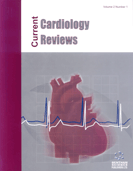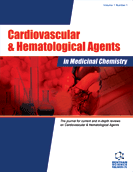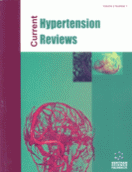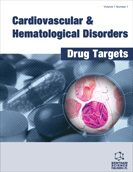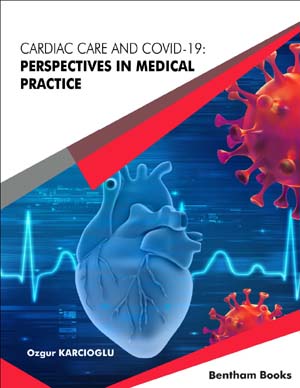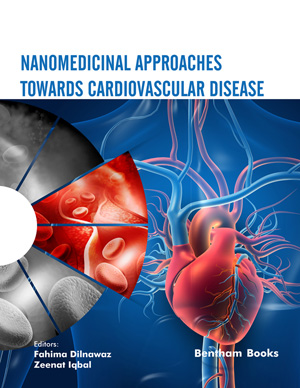Abstract
The metabolic syndrome has been a useful, though controversial construct in clinical practice as well as a valuable model in order to understand the interactions of diverse cardiovascular risk factors. However the increasing importance of the circulatory system in particular the endothelium, in both connecting and controlling organ function has underlined the limitations of the metabolic syndrome definition. The proposed “Circulatory Syndrome” is an attempt to refine the metabolic syndrome concept by the addition of recently documented markers of cardiovascular disease including renal impairment, microalbuminuria, arterial stiffness, ventricular dysfunction and anaemia to more classic factors including hypertension, dyslipidemia and abnormal glucose metabolism; all of which easily measured in clinical practice. These markers interact with each other as well as with other factors such as aging, obesity, physical inactivity, diet and smoking. The final common pathways of inflammation, oxidative stress and hypercoagulability thereby lead to endothelial damage and eventually cardiovascular disease. Nevertheless, the Circulatory (MARC) Syndrome, like its predecessor the metabolic syndrome, is only a small step toward an understanding of these complex and as yet poorly understood markers of disease.
Keywords: Circulatory system, metabolic syndrome, renal function, ventricular function, arterial stiffness, anaemia, metabolic syndrome, MARC, Hypertension
Current Cardiology Reviews
Title:Circulatory Syndrome: An Evolution of the Metabolic Syndrome Concept!
Volume: 8 Issue: 1
Author(s): Ali Reza Khoshdel, Shane L.Carney and Alastair Gillies
Affiliation:
Keywords: Circulatory system, metabolic syndrome, renal function, ventricular function, arterial stiffness, anaemia, metabolic syndrome, MARC, Hypertension
Abstract: The metabolic syndrome has been a useful, though controversial construct in clinical practice as well as a valuable model in order to understand the interactions of diverse cardiovascular risk factors. However the increasing importance of the circulatory system in particular the endothelium, in both connecting and controlling organ function has underlined the limitations of the metabolic syndrome definition. The proposed “Circulatory Syndrome” is an attempt to refine the metabolic syndrome concept by the addition of recently documented markers of cardiovascular disease including renal impairment, microalbuminuria, arterial stiffness, ventricular dysfunction and anaemia to more classic factors including hypertension, dyslipidemia and abnormal glucose metabolism; all of which easily measured in clinical practice. These markers interact with each other as well as with other factors such as aging, obesity, physical inactivity, diet and smoking. The final common pathways of inflammation, oxidative stress and hypercoagulability thereby lead to endothelial damage and eventually cardiovascular disease. Nevertheless, the Circulatory (MARC) Syndrome, like its predecessor the metabolic syndrome, is only a small step toward an understanding of these complex and as yet poorly understood markers of disease.
Export Options
About this article
Cite this article as:
Reza Khoshdel Ali, L.Carney Shane and Gillies Alastair, Circulatory Syndrome: An Evolution of the Metabolic Syndrome Concept!, Current Cardiology Reviews 2012; 8 (1) . https://dx.doi.org/10.2174/157340312801215773
| DOI https://dx.doi.org/10.2174/157340312801215773 |
Print ISSN 1573-403X |
| Publisher Name Bentham Science Publisher |
Online ISSN 1875-6557 |
 29
29
- Author Guidelines
- Bentham Author Support Services (BASS)
- Graphical Abstracts
- Fabricating and Stating False Information
- Research Misconduct
- Post Publication Discussions and Corrections
- Publishing Ethics and Rectitude
- Increase Visibility of Your Article
- Archiving Policies
- Peer Review Workflow
- Order Your Article Before Print
- Promote Your Article
- Manuscript Transfer Facility
- Editorial Policies
- Allegations from Whistleblowers
- Announcements
Related Articles
-
New Chemotherapeutic Strategies Against Malaria, Leishmaniasis and Trypanosomiases
Current Medicinal Chemistry The Role of Myocardial Collagen Network in Hypertensive Heart Disease
Current Hypertension Reviews Cardiovascular Effects of Glucagon-Like Peptide 1
Mini-Reviews in Medicinal Chemistry Therapy Against Ischemic Injury
Current Pharmaceutical Design Adenosine Receptor Ligands in Clinical Trials
Current Topics in Medicinal Chemistry Toll-Like Receptors and Myocardial Ischemia/Reperfusion, Inflammation, and Injury
Current Cardiology Reviews Heat Shock Paradox and a New Role of Heat Shock Proteins and their Receptors as Anti-Inflammation Targets
Inflammation & Allergy - Drug Targets (Discontinued) Heart Failure in Sub-Saharan Africa
Current Cardiology Reviews Regenerative Approaches to Post-Myocardial Infarction Heart Failure
Current Pharmaceutical Design Heart Failure in East Asia
Current Cardiology Reviews Evolving Concepts Concerning Cardiac β-Adrenoceptor Function in Heart Failure
Current Pharmaceutical Design Clozapine Safety, 35 Years Later
Current Drug Safety Melatonin Causes Gene Expression in Aged Animals to Respond to Inflammatory Stimuli in a Manner Differing from that of Young Animals
Current Aging Science Current State of Development of Genome Analysis in Livestock
Current Genomics Regulatable Gene Expression Systems for Gene Therapy
Current Gene Therapy Thrombotic Thrombocytopenic Purpura and Anti-Thrombotic Therapy Targeted to Von Willebrand Factor
Current Vascular Pharmacology Endothelin Receptor Antagonists: Another Potential Alternative for Cardiovascular Diseases
Current Drug Targets - Cardiovascular & Hematological Disorders The ErbB Receptors and their Ligands in Cancer: An Overview
Current Drug Targets Pleiotropic Actions of PPARg Activators Thiazolidinediones in Cardiovascular Diseases
Current Pharmaceutical Design Phytochemicals and Cancer Stem Cells: A Pancreatic Cancer Overview
Current Chemical Biology


